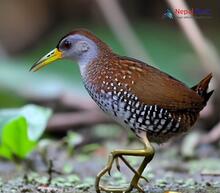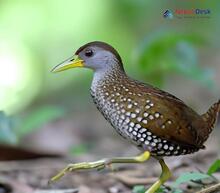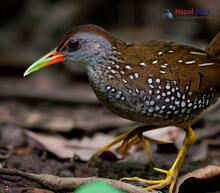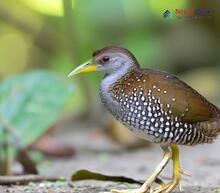The world of ornithology is rich with diverse species of birds, each having its unique features and characteristics. One such fascinating genus is the Porzana, which consists of small waterbirds dwelling in wetlands and marshy areas. In this article, we will delve into the intriguing aspects of the Porzana genus including their origin, evolution history, taxonomy, morphology, ecology, and their presence in Nepal.
Origins and Evolution History
The Porzana genus belongs to the Rallidae family and comprises several species widely distributed throughout Asia, Africa, Europe, Oceania, and the Americas. These birds have evolved over millions of years to adapt to their wetland habitat. Fossil records indicate that early members of the Rallidae family date back to the late Oligocene epoch. The precise evolutionary history of Porzana remains a subject of continued research among ornithologists.
Taxonomy
Bird taxonomists classify Porzanas within the Gruiformes order due to their morphological similarities to other members in this group like coots and crakes. The most recognized species within this genus are Spotted Crake (Porzana porzana), Yellow-breasted Crake (Porzana flaviventer), Black-tailed Crake (Porzana bicolor), and Baillon’s Crake (Porzana pusilla). Over time, several other cryptic species have been identified due to advances in genetic research.
Morphology
Porzana birds primarily consist of small-sized waterbirds with compact bodies and short tails. They possess distinct plumage patterns that help them camouflage amidst their surroundings. Their wings are rounded while bills are narrow yet robust. Another unique feature is their long toes without webbing which allows them to walk on marshy surfaces without sinking.
Ecology
Inhabiting wetlands, marshes, and swamps, Porzana birds are elusive creatures mostly active during the crepuscular hours of the day. They have a diverse diet, consisting of invertebrates like insects and snails, as well as seeds and aquatic plants. Porzana species tend to be migratory or nomadic, depending on the availability of their preferred habitat.
Presence in Nepal
Nepal, with its varied landscapes and rich biodiversity, provides a suitable environment for several Porzana species. Among them, the Baillon’s Crake (Porzana pusilla) and Ruddy-breasted Crake (Porzana fusca) have been recorded in different parts of the country. They are sighted during migration seasons in marshy areas of protected wetlands, as well as natural grasslands.
In conclusion, the Porzana genus encompasses intriguing waterbirds that have evolved over time to thrive in wetland environments. Their elusive nature makes them exciting subjects for birdwatchers and researchers alike. As we continue to study these birds, a better understanding of their origin, evolution, taxonomy, morphology, and ecology can help us protect their habitats and ensure their survival for future generations to appreciate.




